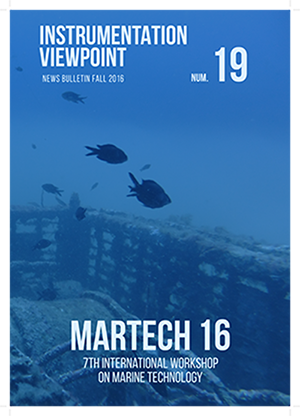Range-only benthic rover localization off the central California coast
Abstract
Nowadays, the use of autonomous vehicles for ocean research has increased, since these vehicles have a better cost/performance ratio than crewed vessels or oceanographic ships. For example, autonomous surface vehicles can be used to localize underwater targets. This paper describes a mission to find a crawling robot - Benthic Rover - on the abyssal plain in the north eastern Pacific, using single-beacon localization from onboard a Wave Glider autonomous surface vehicle. While the Wave Glider is moving around the surface in the target zone, it takes ranges between the target and itself using acoustic modems. With these ranges it can compute the target location, as a Long Baseline (LBL) system. The benefit of this approach is the reduction of cost and complexity relative to deployment of a traditional shipboard LBL system. Additionally, this is a mobile system, and can cover long distances, and can geolocate multiple targets over a large area.Downloads
Issue
Section
License
Universitat Politècnica de Catalunya has joined the Berlin Declaration on Open Access to Knowledge in the Sciences and Humanities. This declaration proposes the universal acces to the results of scientific and technical research.
All papers presented at Martech will be published in both the UPCommons and the Martech organization web sites, the former being the institutional digital deposit of Universitat Politècnica de Catalunya (https://upcommons.upc.edu). This difussion will be made through the Creative Commons License Attribution-NonCommercial-NoDerivs 2.5 or similar (http://creativecommons.org/licenses/by-nc-nd/2.5/deed.en).
When sending the final paper, the author must agree to the conference having non-exclusive rights on this operation. The author will maintain his/her right to diffuse the paper elsewhere.







